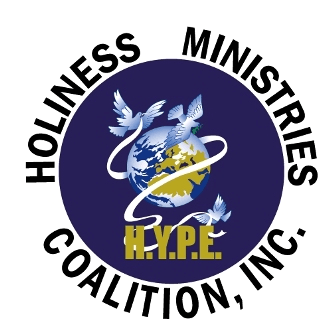Mission Statement
Work collaboratively with churches, individuals, agencies and organizations to bring together all sectors of the communities in which we live work and worship to foster safe and drug free environments and to end hunger in our communities and our great nation by the year 2030.
Goal
Provide academic, social and educational programs that enhances the quality of life and health of our youth by preventing the use of drugs.
To help young people excel in school and build a strong community in which they live by providing recognition banquets.
H.Y.P.E.
Helping Young People Excel
Feed the Need Program
Lamb of God Food Bank
To help end hunger in San Diego county by the year 2030.
There are approximately 40.6 million food insecure families in our nation and of that number 15 million of them are children, it is our prayer that you join with us in this endeavor by donating and volunteering.
We make every effort in always providing our clients with the best food services available.
Experience! Reliability! Expertise!
Our dedication in the field of community services and the long list of previous projects run, recommend us as a reliable community partner. By choosing our organization, you will benefit from our resources, dedication and high availability. Feel confident that together we can end hunger in our communities and ultimately in our nation by the year 2030.
Hunger and Poverty in San Diego County:
Of San Diego County’s 3.1 million residents, 504,829 people live in poverty – that’s 14.7% of the population of San Diego County.* Of this number, 160,857 are children. These individuals face "food insecurity" which means that little or no food is available at home, and often they will not know how they will get their next meal.
(*U.S. Census Bureau. American Community Survey, 2014. Compiled by SANDAG, April 2016.)
New ParagraphCar Donation Tax Deduction
Vehicle Donations and The Tax Law
Short Summary of Tax Law
Donors may deduct the fair market value up to $500, or if the vehicle sells for more, the greater amount. If the vehicle is used in the charity’s mission (provided to a qualified person or entity) the donor may deduct the “fair market value”. According to the IRS, the donor, not the recipient charity, must determine the “Fair market value” which the IRS describes as the price that a willing buyer and a willing seller would agree to if neither were pressured to do so. Assistance with vehicle values can be found at Kelly Blue Books website (use private party value as a guide). Donors valuing their donation in excess of $5000 must acquire an independent appraisal.
In-Depth Summary of Tax Law
Beginning January 1, 2005, new federal tax legislation governing vehicle donations goes into effect. The following is a summary of the new legislation contained in (HR 4520).
Under the new law, allowable deductions for charitable contributions of vehicles, boats, and airplanes (collectively referred to as “assets” in this summary) for which the claimed value exceeds $500 will depend on how the asset is used by the recipient charity. If the organization sells the asset without any significant intervening use or material improvement, the donor’s deduction is limited to the gross sales proceeds received by the charity. But, if the organization uses the asset in direct furtherance of its charitable purpose the donor may deduct the “fair market value” of the asset. (According to the IRS, the donor, not the recipient charity, must determine the “fair market value” which the IRS describes as the price that a willing buyer and willing seller would agree upon if neither were pressured to do so. Assistance with vehicle values can be found at Kelly Blue Book’s web site. Use private party value as a guide.
Examples: If a vehicle with a “fair market value” of $4000 is donated directly to the non-profit charity and the organization sells the vehicle for $1000, the donor can only deduct $1000. But, if for instance, the organization provides the vehicle to a disadvantaged person, the donor may deduct the full “fair market value” of $4000.
Substantiation requirements when the claimed value exceeds $500 are as follows: No deduction is allowed unless the donor receives a written acknowledgment from the charity. That document must include the name and taxpayer identification number (social security number) of the donor and the vehicle identification number (or similar number) of the asset. Additional documentation is required but is dependent on how the asset is used by the charity:
In the event the charity sells the asset without any significant intervening use or material improvement, the charity must send a written acknowledgement to the donor within 30 days of the sale certifying (1) that the asset was sold at an arms length transaction between unrelated parties, (2) the amount of the gross sales proceeds, and (3) include a warning that the donor’s deduction is limited to the sales proceeds.
If the charity intends to make significant use of the donated asset (such as providing a donated vehicle to a disadvantaged person) or make material improvements, the required written acknowledgement must be provided within 30 days of the contribution and must certify: (1) the intended use and duration of such use or the material improvements to be made and (2) that the asset will not be transferred in exchange for money, other property, or services before completion of such use or improvements. For more information on car donation tax deductions, read the IRS Donors Guide to Car Donation.




